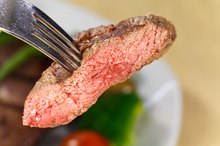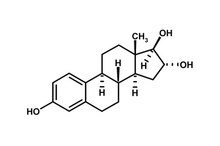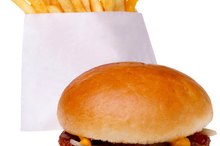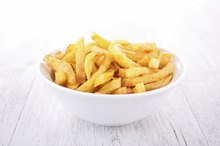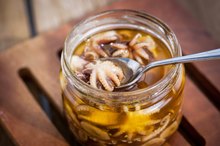Components of a Triglyceride
A triglyceride is the most common form of fat in foods and in the body. Triglycerides are needed for good health and they are a rich energy source, as they provide more than twice as much energy for the body as carbohydrates and protein. However, high triglyceride levels increase the risk of heart disease, according to the American Heart Association.
If you are experiencing serious medical symptoms, seek emergency treatment immediately.
Glycerol
Glycerol is the central component of a triglyceride molecule, as described by Dr. Neil Campbell and his colleagues in “Biology.” A glycerol molecule contains three carbon atoms and three hydroxyl groups, which are a unit of oxygen and hydrogen. A hydroxyl group is represented by –OH in chemistry notation. The oxygen and hydrogen atoms are bonded together in the hydroxyl group. In the structure of a glycerol molecule, the carbon atoms are bonded to each other, and the oxygen from each hydroxyl group is attached to each carbon atom. The hydrogen atoms are at the end of the glycerol molecule and form bonds with fatty acids to yield a triglyceride.
Fatty Acids
Structure of a Triglyceride Molecule
Learn More
A triglyceride contains three fatty acids. A fatty acid contains a carboxylic acid and a chain of carbon and hydrogen atoms. Carboxylic acid is made of at least one carboxyl group, which is made up of one carbon atom, two oxygen atoms and one hydrogen atom. In chemistry notation, a carboxyl group is represented by the notation –COOH.
Chains of 16 and 18 carbons are the most common, although the chain length can vary. Each carbon atom in the chain is able to have four bonds with other atoms. The chain of carbon and hydrogen atoms in a fatty acid can be saturated or unsaturated.
A saturated chain means that every carbon atom in the chain is attached to two hydrogen atoms and the two carbon atoms on either side in the chain. However, the carbon atoms at the end of the saturated chain are attached to three hydrogen atoms and only one carbon atom. Saturated fats are solid and are found in butter, lard, fatty meat, palm oil and coconut oil.
An unsaturated chain means that any of the carbon atoms has a double or triple bond to another carbon atom, allowing for the bonding of one or two hydrogen atoms to those carbon atoms. Unsaturated fats are liquid and are found in fish, nuts, seeds and vegetable oils, such as olive and canola oils.
Overall Structure
A triglyceride is a combination of a glycerol molecule and three fatty acids. In each fatty acid, a carbon atom from the carboxyl group binds to an oxygen atom from each of the three hydroxyl groups in the glycerol molecule.
Related Articles
References
- American Heart Association: Your Triglyceride Level
- “Biology”; Neil Campbell, Ph.D., Jane Reece, Ph.D., and Lawrence Mitchell, Ph.D.; 2001
Resources
Writer Bio
Mary Lehrman is a licensed psychologist with a Ph.D. in health psychology. She is also a personal trainer. Lehrman has published in academic journals and has more than 10 years of experience in helping people improve their health and well-being.
